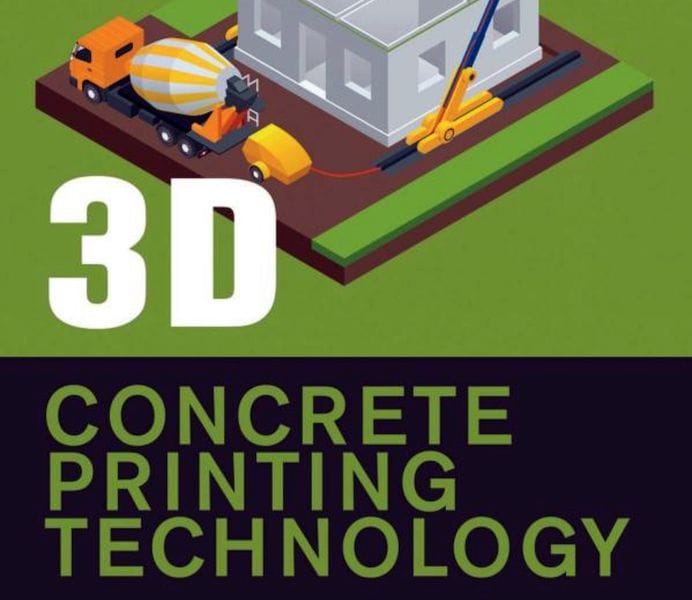![3D Concrete Printing Technology [Source: Amazon]](https://fabbaloo.com/wp-content/uploads/2020/05/image-asset_img_5eb09a70d994a.jpg)
This week’s selection is “3D Concrete Printing Technology: Construction And Building Applications” by Jay G. Sanjayan, Ali Nazari and Behzad Nematollahi.
With the recent boost in interest in construction 3D printing, this book is quite timely. The market is now seeing a number of rudimentary construction 3D printing solutions emerge, but are they optimal? What construction 3D printing processes are best for a given situation? How do you optimize the performance of the printed structures?
These are among the questions being answered with this fascinating book.
The book begins with a general discussion of the nature of construction 3D printing, with a quick review of the few known concrete 3D printing processes. These include the increasingly popular concrete extrusion process, and the lesser used powder bed technique. There is also discussion of other “emerging objects”.
The remainder of the book contains discussions surrounding multiple key issues in the construction 3D printing space.
One investigates the performance aspects of the portland cement itself. Another investigates magnesium potassium phosphate cement. This is an issue of considerable attention in the traditional construction world, as a poorly cured concrete mix could catastrophically compromise a structure, potentially leading to serious damage in the future.
Another looks at the use of “lost formworks” in 3D printed construction. This is similar to the “lost wax” process, in which a mold is created for the “production” concrete material, which is simply poured in and cured. This technique has been successfully used on several construction 3D printing projects over the past few years.
Several chapters investigate the use of “geopolymers”, which are polymers designed for use in construction 3D printing, as opposed to using traditional cement mixes. Just because we currently use cements for virtually all major construction projects today does not mean we should not explore the use of alternative materials enabled by 3D printing technologies.
A final chapter investigates the adoption of construction 3D printing, but only in the Australian market. While this is a local investigation, many of the insights are certainly applicable to other regions.
If you are considering starting a construction 3D printing venture, or considering using one, this book may be of interest.
Via Amaxon











This week’s selection is “3D Printing Projects” by Dorling Kindersley, a.k.a. “DK”.